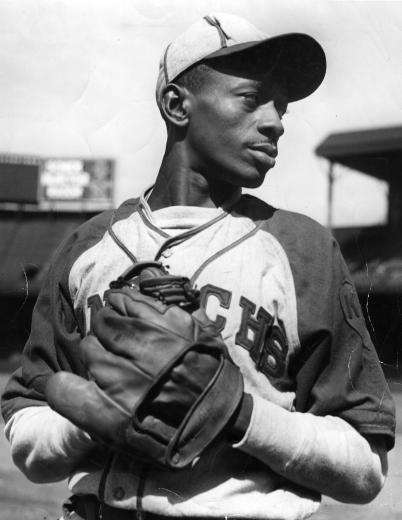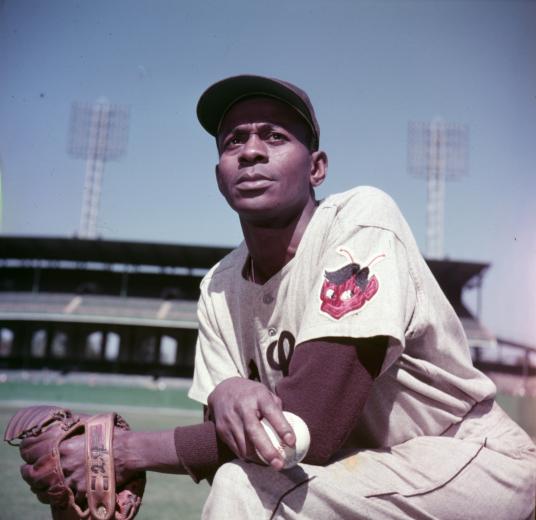He was a storyteller and one of the legendary entertaining pitchers in baseball history.
Tall and lanky, Leroy Robert “Satchel” Paige is regarded as the Negro Leagues’ hardest thrower.
A colourful character, Paige is also cited when it comes to sports men who drew in fans in the thousands to watch matches.
Leroy Robert “Satchel” Paige was born circa July 7, 1906, in Mobile, Alabama as the seventh child to John, his gardener father, and mother Lula, a washerwoman.
On how he came to spell his Paige from the earlier Page, he explained it was his mother who added the ‘I’ to the Page to sound “high-tone.”
He also stated that he got the Satchel nickname when he started work at the train station carrying luggage for businessmen. His co-workers told him “You look like a walking satchel tree,” after he modified a pole to carry many bags at a time.
Apparently, playing baseball was not on Paige’s table. However, when just 12, he was arrested for petty theft and truancy. For his punishment, he was deposited at the Industrial School for Negro Children in Mount Meigs, Alabama.

Already possessing a lanky frame, big hands and feet, baseball coach Edward Byrd saw a natural resource which needed refining to a finished product. Paige would develop his baseball, particularly, his pitching, at the reform centre through constant practice and knowledge acquisition.
Byrd taught Paige “to pull back, kick his foot high in the air and, as he came down, bring his arm from way behind and thrust his hand forward as he released the ball, giving it maximum power as it hurtled forward,” writes biography.com.
“You might say I traded five years of freedom to learn how to pitch,” Paige later recalled.
With the white-only Major Leagues door firmly shut in the face of African-American players, Paige, in 1926, set his eyes on the Negro Southern League as a professional.
Making a name for himself with the Birmingham Black Barons, Paige quickly found baseball fans attending games to see him play to the extent that teams he played for recorded huge attendances.
Paige played for teams all over the country, from California to Maryland to North Dakota and even outside its borders, in Cuba, the Dominican Republic, Puerto Rico and Mexico.
Between contracts, Paige built quite a following through barnstorming (travelling) tours, which consisted of exhibition games against other professionals and regional talent that provided extra money.
In one such game, he was hired to front a team called the “Satchel Paige All-Stars” and ended up pitching to New York Yankees great Joe DiMaggio, who called him “the best and fastest pitcher I’ve ever faced.”

Paige also once opposed St. Louis Cardinals ace Dizzy Dean in a series of exhibition games, winning four of them. Afterwards, Dean noted, “If Satch and I were pitching on the same team, we’d clinch the pennant by the fourth of July and go fishing until World Series time.”
Let that sink in. Joe DiMaggio and Dizzy Dean were both celebrated, yet, after having a go against Paige, they were in no doubt about his quality.
A man who understood the power of storytelling, Paige, despite the doubts of naysayers, pitched in more than 2,500 games and won about 2,000. He also played for 250 teams, throwing 250 shutouts.
According to some accounts, however, Paige compiled 31 wins against just four losses in 1933, and also accumulated streaks of 64 consecutive scoreless innings and 21 straight victories.
In the late 1930s, when Paige developed arm problems for the first time, Kansas City Monarchs owner J.L. Wilkinson signed Paige to his “B” team, giving him time to heal.
Within a year, Paige’s shoulder had healed and his fastball returned. As he aged, the control he once used to dazzle fans now became his primary weapon as a pitcher. “He could throw the ball right by your knees all day,” said Cool Papa Bell.
On July 7, 1948, Paige made his way to the Major Leagues when Cleveland Indians’ owner Bill Veeck, in need of extra pitching, gave the Negro League veteran a contract to play for the Indians on his 42nd birthday.
He thus became the first Negro League pitcher in the American League although Jackie Robinson was the first black athlete to play Major League Baseball after joining the Brooklyn Dodgers in 1947.
Paige went 6-1 with an outstanding 2.48 ERA in half of a season, helping the Indians win the World Series. He pitched one more season with Cleveland and then played for three years with the St. Louis Browns.

Despite his age, Paige continued to tour regularly for hefty appearance fees. At age 59 on September 25, 1965, he became the oldest player in Major League history, marking the occasion by throwing three scoreless innings and allowing just one hit for the Kansas City Athletics.
He finished his big league career with a 28-31 record, 32 saves and a 3.29 ERA.
Paige was renowned for his hard fastballs, with some reckoning he could do anything he wanted with the ball.
Paige wrote a couple of autobiographies, including Maybe I’ll Pitch Forever: A Great Baseball Player Tells the Hilarious Story Behind the Legend, in which he secretly lamented not being the first black player in the Major Leagues instead of Robinson, but he bore it with equanimity.
On rumours about his true age, he often quoted Mark Twain: “Age is a question of mind over matter. If you don’t mind, it doesn’t matter.”
The legendary pitcher died of a heart attack in Kansas City, Missouri, on June 8, 1982, less than a month before his 75th birthday.
Paige, the Negro Baseball Leagues famous showman was elected to the Hall of Fame in 1971 as the first elected of the Committee on Negro Baseball Leagues.
In 1946 or 1947, Paige married his longtime girlfriend LaHoma Jean Brown. The pair had seven children together.










